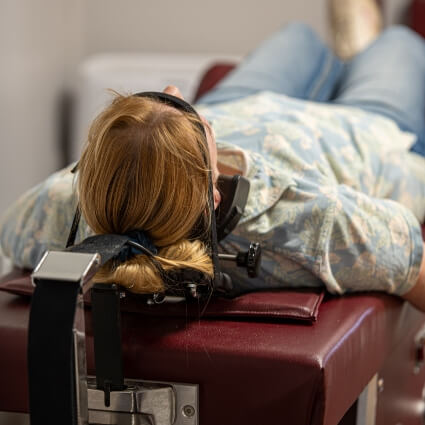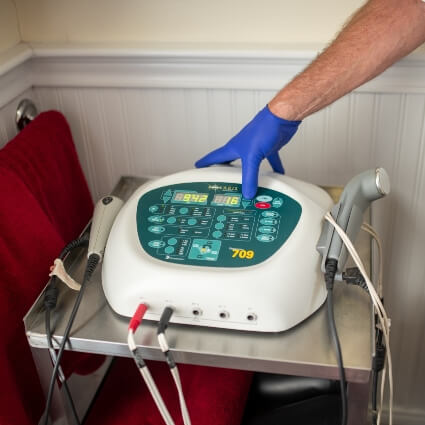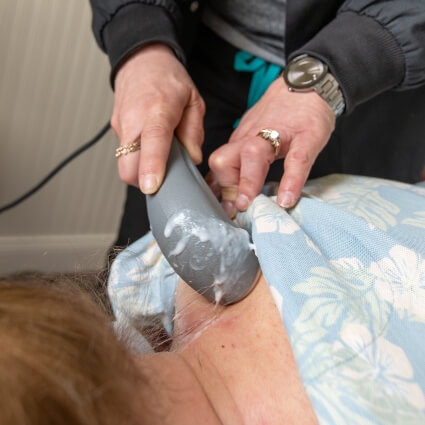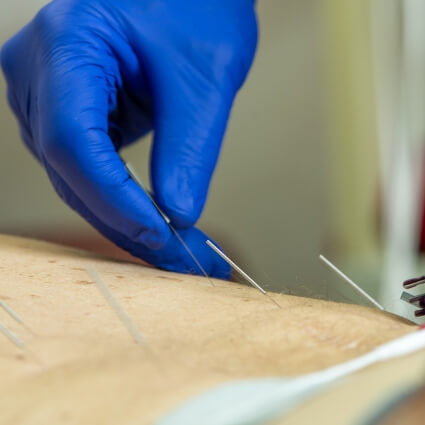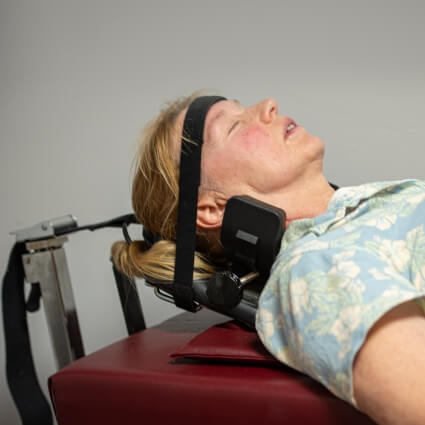Additional Services in Torrington
Holistic Approach to Care
Every patient has differing needs, so other techniques we use include Sacro Occipital Technique (SOT®), Cox Technique/Flexion Distraction, and Activator® Methods, a gentle instrument adjusting technique. Chiropractic care also works well with massage, traction, and many other modalities.
Misalignments and other conditions may occur in any part of the body, which is why extremity adjustments are an important part of our practice. Dr. Downs has extensive experience diagnosing and addressing extremity conditions, ranging from sprains/strains to arthritic and overuse syndromes.
Stretching techniques, transverse frictional massage, dry needling, mobilization, and physiotherapy can effectively address an upper or lower extremity problem. Additionally, exercise regimens are also critical in rehabilitating those types of issues.
At its core, chiropractic embodies the concept of holistic wellness as a balance of structural, metabolic, and emotional well-being to form the triad of optimal health. To achieve this goal, our team addresses more than just the physical; we review diet, supplementation, nutritional issues, and other aspects that may affect health.
Our holistic method of care takes a broad view of a patient’s condition, not just focusing on a specific symptom but addressing their entire health profile. Recommendations regarding exercise, fitness regimens, stretching routines, weight loss advice, and diet modification are all part of counseling our patients toward better health.
Following the same theme, good nutrition is essential to achieving better health. For many patients, nutritional deficiencies or weight problems have become detrimental to their overall health.
Dr. Downs evaluates and discusses dietary and nutritional issues and offers solutions to improve your health. We have an assortment of commonly prescribed supplements on-site for those patients who choose to enhance their health through diet and nutrition.
Also on-site, we have Jeff Forman, an independent nutritional consultant with a Master’s degree in Clinical Nutrition. He is available for those patients seeking a more in-depth consultation.
Soft tissue therapies are other tools available to treat the connective tissues of the spine and extremities. One such method is trigger point therapy, which involves the compression of myofascial “knots,” or trigger points, to release muscular tension. Trigger points may also be addressed with dry needling.
Another very effective tool is myofascial release therapy, offered by licensed massage therapist Jeff Forman. This method goes deeper than traditional massage therapy to give patients the relief they need from chronic pain.
Dry needling is a myofascial trigger point technique that aims to release dysfunctional connective tissue and restore or improve muscle functionality. The procedure is valuable both diagnostically and therapeutically, as the therapy disrupts locked soft tissue. The benefits of this can be far-reaching, as myofascial pain and tightness play a key role in most musculoskeletal pain syndromes.
Breaking up trigger points is crucial in reducing pain generators in the body. This technique is well-established as an effective treatment of soft tissue dysfunction. It has widespread use in Europe and is gaining strength in the United States.
Not to be confused with acupuncture, dry needling is based upon traditional Western concepts of anatomy, physiology, neurology, and biomechanics. The only commonality with acupuncture is the use of the same monofilament needle. Patients of all ages well tolerate the procedure, and it’s virtually painless. Benefits are typically seen in one to six treatments.
Dr. Downs completed training for this technique at The Dry Needling lnstitute, founded and directed by Dr. David Fishkin, who has been developing and applying this technique since 1998. He is also an adjunct instructor with Dr. Fishkin in teaching the dry needling technique to other health professionals. While it can be used as a stand-alone therapy, patients achieve better outcomes and greater joint and muscular improvement when added to chiropractic care.
Acupuncture is one of the primary forms of treatment in Traditional Chinese medicine. It involves using very thin needles inserted in the body at precise points to adjust and alter the body’s energy flow into healthier patterns.
Although used to treat a wide variety of illnesses and health conditions, our team commonly uses it for pain management. Other conditions, such as tinnitus, hot flashes, and dizziness, have also seen success. For patients whose condition appears more suited to this approach, we will refer them to local acupuncturists for more specialized care.
Electrical muscle stimulation (EMS) techniques are used worldwide in sports medicine, physical therapy, and chiropractic offices. This modality has treated musculoskeletal pain and injuries for many years, developing different styles for specific situations. Here are some types commonly used:
- lnterferential Therapy: this is probably the most widely used EMS protocol. Using a mid-frequency electrical signal to treat muscular spasms and strains, the current massages the affected area. Results include pain relief, muscle stimulation, increased local blood flow, and reduced edema. The periodic intervals stimulate the secretion of endorphins, the body’s natural pain relievers, relaxing strained muscles and promoting soft tissue healing. This is a more comfortable type of therapy and can be very soothing when used with heat.
- Russian Faradic Therapy: this form of EMS tones muscles by repeatedly contracting them with an electric current. It’s used when muscles have been weakened by injury or cannot be exercised or rehabilitated by typical methods. One condition it has been found helpful for is Bell’s palsy, where facial paralysis and weakness create a drooping of the face. This therapy generates a contraction to help improve muscle tone until the nerve responsible for the condition can heal and contract the muscle more normally on its own.
- Microcurrent Therapy: provides electrical current in millionths of an ampere, a similar scale as the current the body produces in its own cells, and helps with wound healing and stimulating regeneration of injured tissue.
- Galvanic Current Therapy: uses a direct current to maintain a constant energy current flowing through the tissue. Patients usually feel a low-level tingling sensation, and the signals from the stimulation appear to override the pain signals sent by the body, allowing the patient to experience less pain.
Traction is one of the more commonly used and beneficial treatments available at Downs Chiropractic. Its primary benefit is the decompression of discs and joints in the spinal column to restore proper vertebral spacing and relieve pain.
We have two traction tables, one for the lumbar region and one for cervical traction. Our doctor modifies the force used according to the patient’s weight and the severity of the condition, ensuring the treatment is comfortable and therapeutic. Sessions are typically ten minutes and may be done with other chiropractic techniques. The combination of traction and chiropractic helps address disc abnormalities.
Therapeutic ultrasound uses sound waves through a wand-like head to penetrate soft tissue. It’s an effective method for generating “deep” heat to treat musculoskeletal injuries and inflammatory conditions such as bursitis and tendinitis.
These waves can penetrate two to three inches into the tissue to generate soothing warmth deep in the layers of connective tissue, promoting tissue relaxation, relieving muscle tightness and spasms, and promoting blood vessel vasodilation and circulation to the area.
Cupping therapy is another ancient Chinese form of alternative medicine in which local suction is created on the skin to promote blood flow and speed healing. This therapist creates a partial vacuum in cups placed on the skin. Once good suction is obtained, the suction cup may be moved over the skin, which has been lubricated with mineral oil.
This suction-style massage releases myofascial tension and improves soft tissue flexibility. This treatment is especially useful for the mid-back region but can also be used for other conditions.
Cold laser is also known as a low-level laser because it operates at a light wavelength that doesn’t produce heat. Laser light is a pure form of light energy of a specific color and wavelength, which penetrates the skin to interact with underlying tissues and have positive healing effects. Primary usages for this modality include pain management, reduced swelling/inflammation, and accelerated healing.

